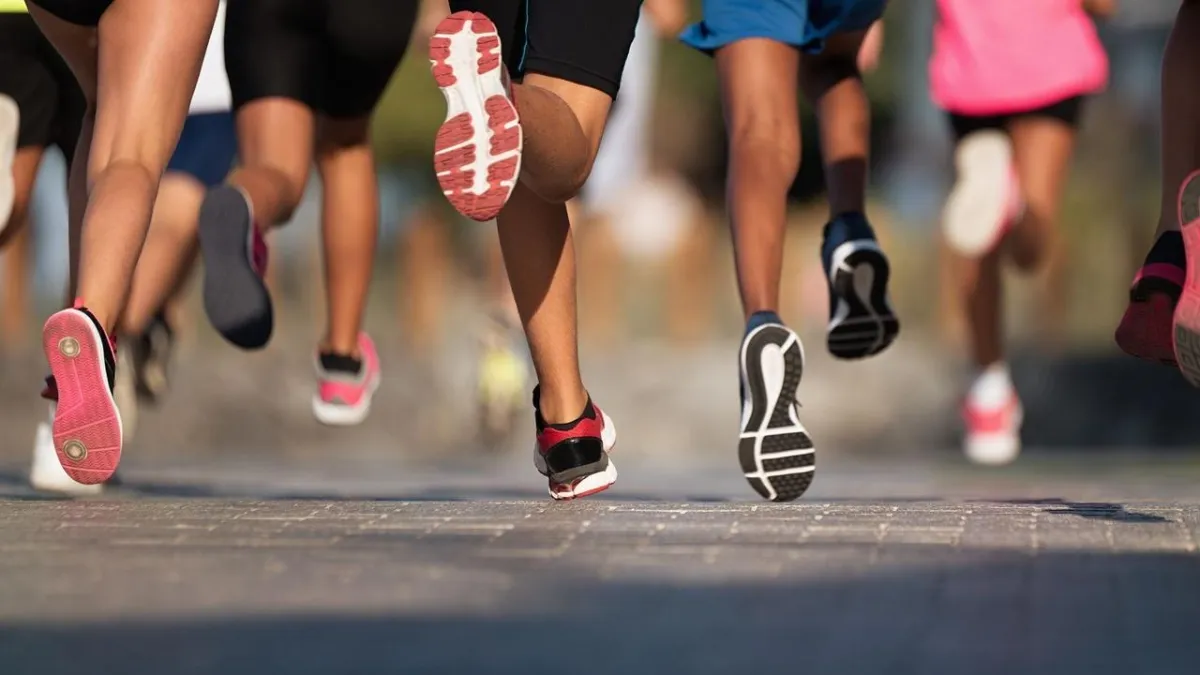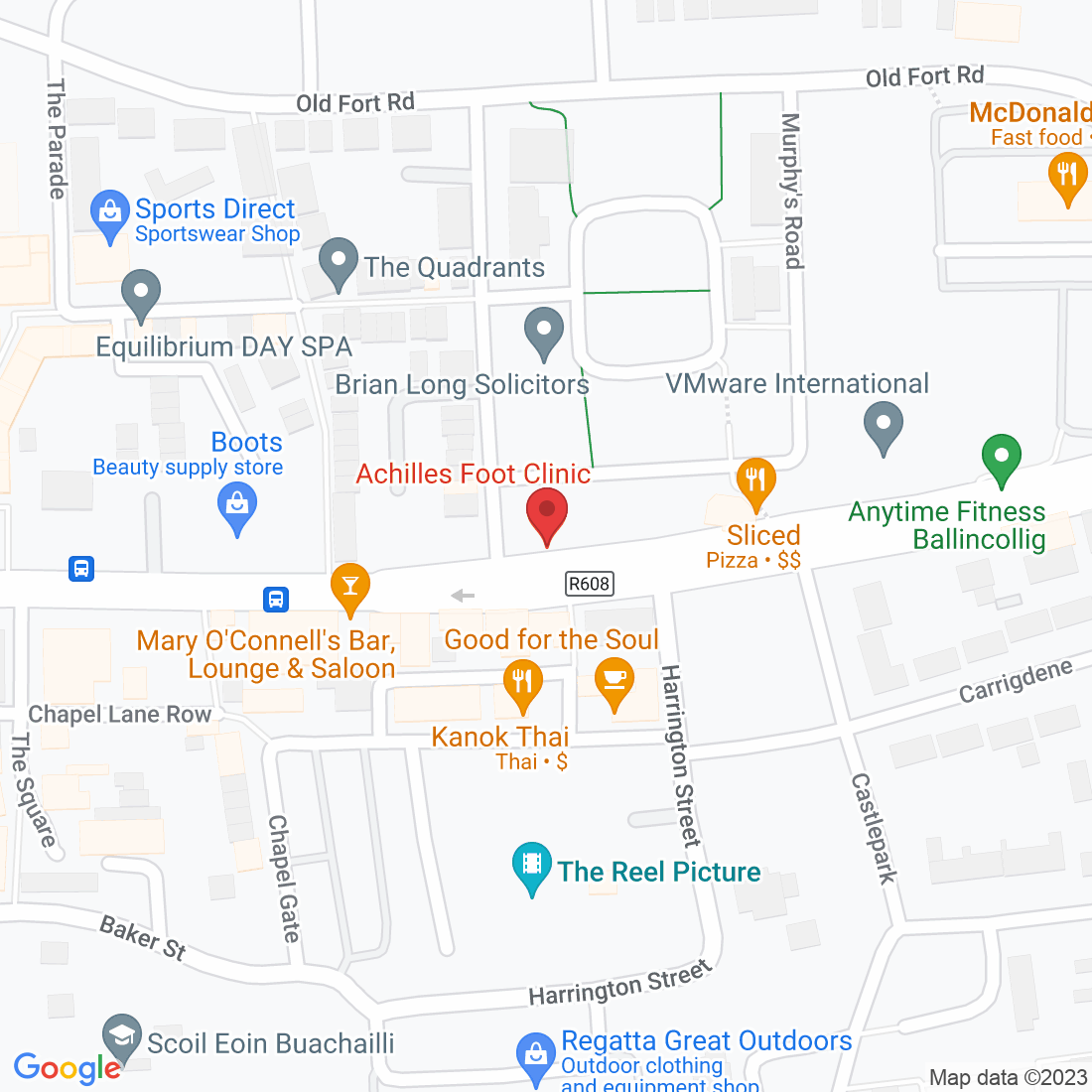
We have all been there, neglected a niggle in our foot and told ourselves that it would probably go away. Weeks have passed, even months, and it’s only getting worse. Then finally, when we are hobbling around barely able to walk, we decide to seek help…
Well, at Achilles Foot Clinic, we are here to help you.

Top 7 Most Common Foot Issues For Runners
Most runners will find themselves sidelined with a foot injury or pain at some point.
Anything from a simple blister to a more complex stress fracture can put a halt to training plans.
Most running injuries generally involve the lower body, including the knees, ankles, hips, groin, and legs, but more often than not the feet take a significant hit compared to the other body parts.
What are the most common foot issues for runners?
As any runner can tell you, the feet take most of the heat when pounding the pavement.
If you overtrain, ignore pain, or neglect preventative care, you may find yourself with one of the following foot issues that runners experience.
Blisters
Blisters may not be a serious injury, but they sure are painful.
Blisters are small pockets of clear fluid under a layer of skin.
Blood blisters may look red or black and are filled with blood instead of clear fluid.
An infected blister can be hot and filled with green or yellow pus (not the prettiest).
It should help wearing shoes with:
heel control
the right midfoot base
appropriate toe room for spreading and gripping actions
the right shoe flex to match your metatarsal flex
Also, be aware of any irritating seams, stitching, or enclosures that cause skin friction.
Toenail damage
Some runners can experience toe rubbing against the front of the shoe if the shoes are too small or the foot is sliding forward, especially when running downhill.
This is common in runners training for long-distance events.
When it happens that a runner gets a damaged or ingrown toenail it can be very painful.
It often happens that the nail is pushed down into the nail bed, becoming bruised and inflamed, often leading to loss of the nail.
Hallux rigidus
The base of the big toe is home to the metatarsophalangeal (MTP) joint, which bends each time you take a step.
If this joint stiffens, running can be especially painful.
It what us podiatrists call hallux rigidus or “stiff big toe.”
Arthritis of the big toe, MTP joint, can lead to hallux rigidus, it may result from an old injury to the toe or overuse.
Plantar fasciitis
Plantar fasciitis is a painful condition that causes inflammation of the plantar fascia.
The plantar fascia attaches to the heel bone and extends across the bottom of the foot. With each step, it pulls on the heel (like an elastic band), and significant repetition, such as with running, may cause it to become inflamed.
Plantar fasciitis is common in runners who have flat feet, but it can also be seen in runners with high arches. Plantar fasciitis is an overuse injury, caused by the stress a runner places on the feet.
Stress fractures
Stress fractures can occur from overuse without enough time to heal.
A stress fracture that’s not appropriately addressed can become a complete fracture where the bones break through and can be displaced.
Stress fractures typically occur:
at the end of the metatarsals (long bones in the foot)
at the base of the fifth metatarsal (pinky toe)
in the bones of the ankle joint
Metatarsalgia
Metatarsalgia is a painful irritation of the tissue, muscles, tendons, ligaments, and joints surrounding any of the five long metatarsal bones of the foot that connect or articulate with the toes.
When this happens, the areas covering or surrounding the metatarsals can become irritated and inflamed after running.
The cause is usually excessive contact with the ground while running, leading to the breakdown or trauma of the metatarsals.
Morton’s neuroma
A Morton’s neuroma is an inflammation of a nerve in the ball of the foot.
It is common in runners because of the repetitive pressure on the forefoot while running.
The nerve gets trapped between the adjacent metatarsal bones and a ligament, which causes the nerve to swell, becoming inflamed and causing pain.
Morton’s neuroma is common in runners with a high arch who strike the ground with their forefoot and runners who wear shoes that are too narrow. Narrow shoes add pressure on the nerve and increase the pain.
Some say it feels like there's a pebble in their shoe or that their sock feels like it's balled up.
Don’t wait to see a specialist
Pushing through the pain isn’t a good idea, especially when it comes to your feet.
You shouldn’t wait to get your foot pain checked by a foot specialist, such as a podiatrist.
The longer you wait, the more advanced the injury becomes, which can increase the risk that you will have to stop running for a period of time.
Manual Therapy and custom orthotics are both excellent ways to treat a lot of common running injuries. They may also be helpful in preventing running injuries from returning in the future.
If You Are Suffering With A Running Pain Or Injury Call Us Now On 0212021001
Or
Fill Out The Form Below And A Member Of The Achilles Foot Clinic Team Will Call You
Ask Lorcan And His Team
Fill in the form to request a Call From Our Team
Fill in the form to request a Call From Our Team
One of our team will call you for FREE and answer any questions or concerns you may have about Bunions.
One of our team will call you for FREE and answer any questions or concerns you may have about your uncomfortable Bunions.








